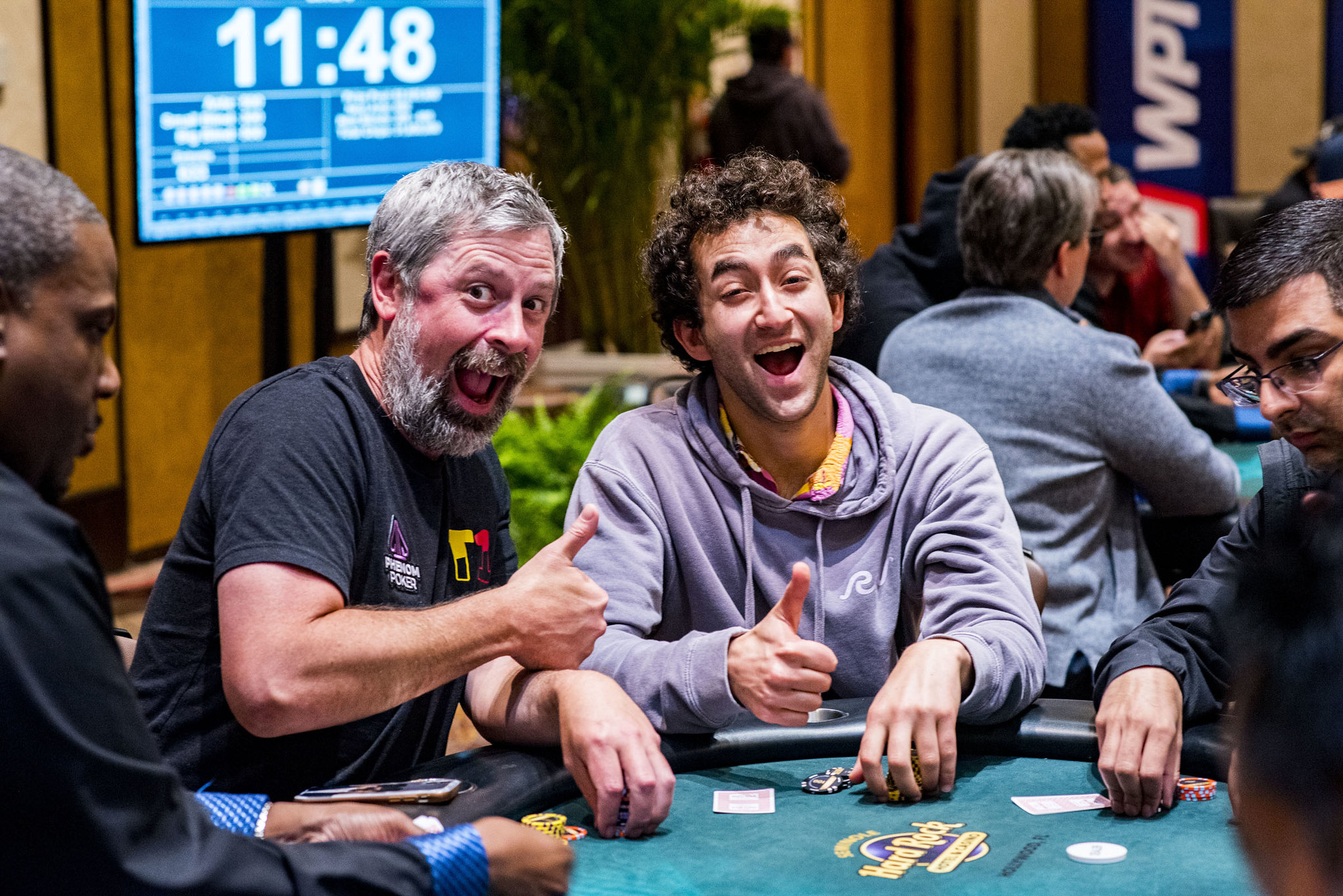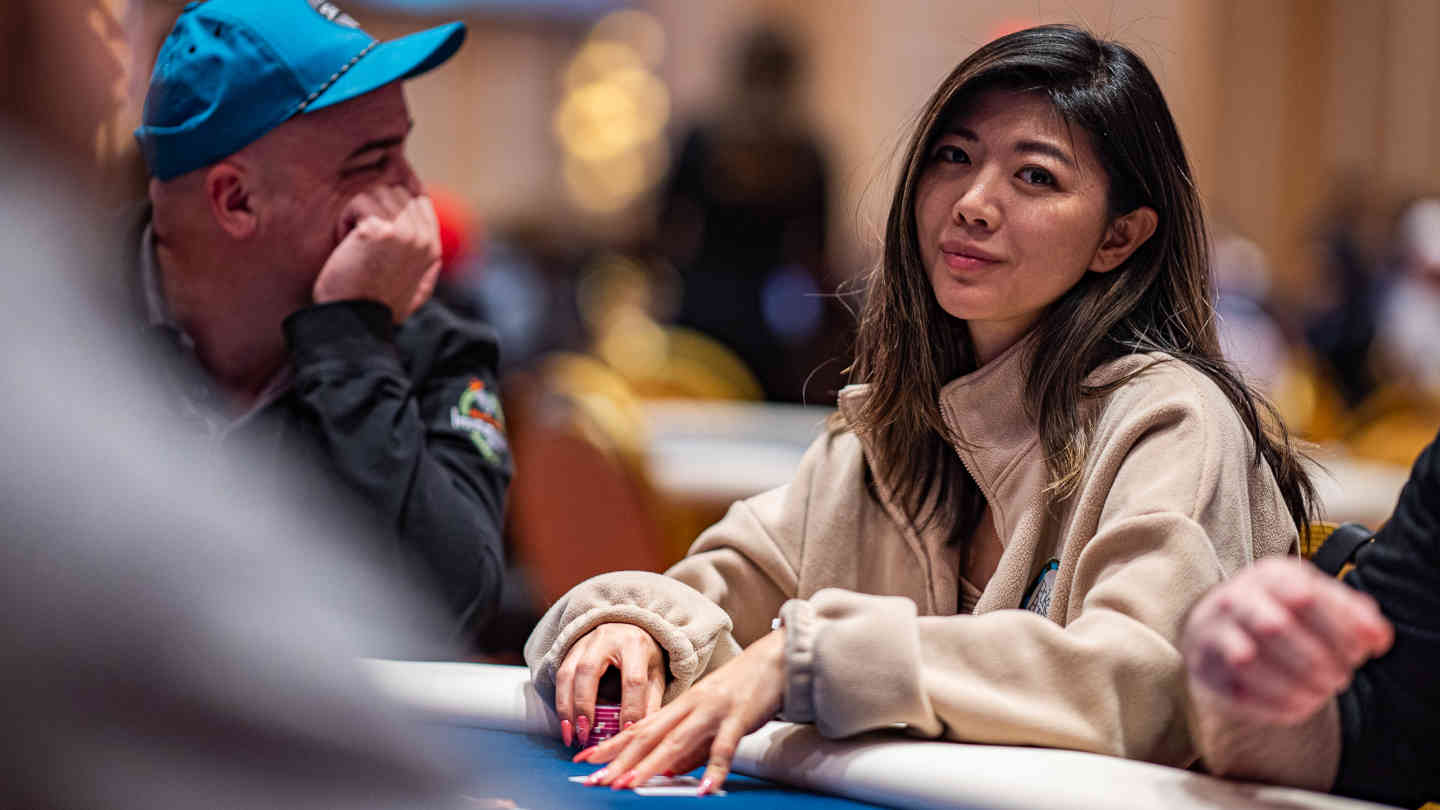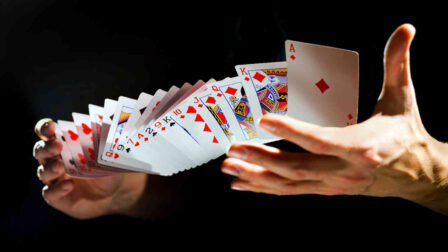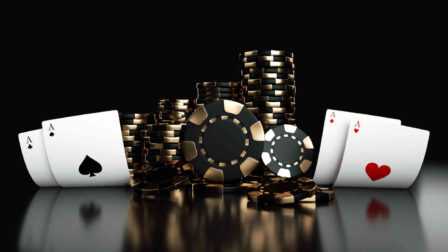How to Play 2-7 Triple Draw Poker – Master The Best Strategies
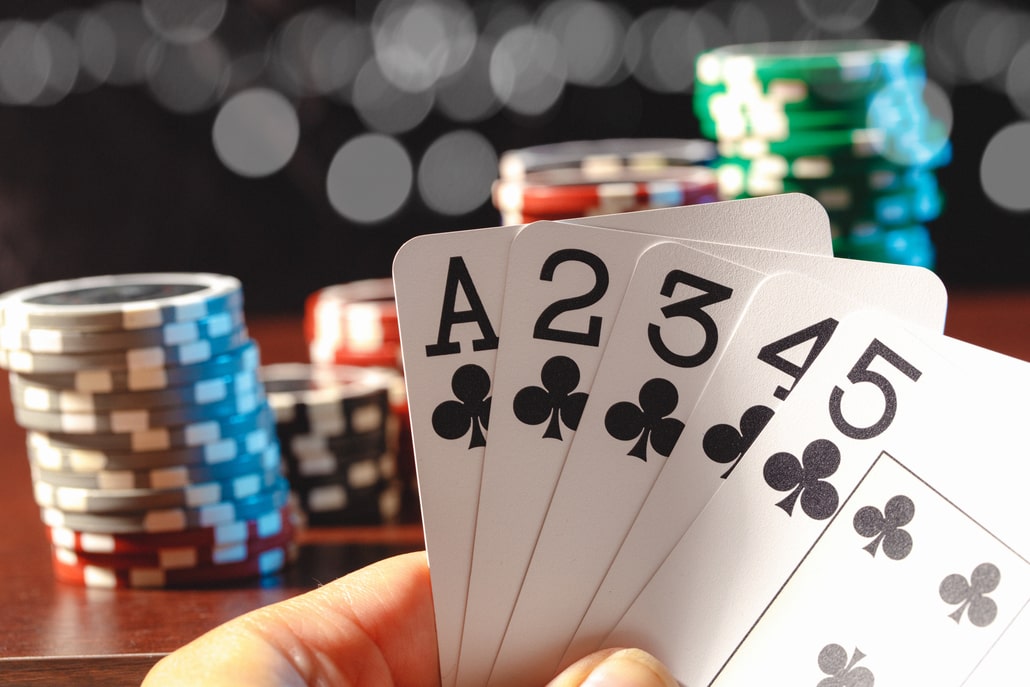
11 minutes
Last Updated: March 19, 2024
How to Play 2-7 Triple Draw Poker – Master The Best Strategies
2-7 Triple Draw Poker is different from pretty much all other variants out there, so if you’re looking for a truly unique and exciting experience, you should check this one out.
With a unique hand-ranking system and different rules, 2 7 Triple Draw will feel like a real breath of fresh air.
Even though this game may not seem too popular at first, it is quite present in high stakes poker circles. You can read Jake Abdalla interview about how he got into these games and kept crushing it for years.
It is played on its own and as a part of mixed game variations. In fact, numerous pros spent a lot of time perfecting their 2-7 Triple Draw strategy so that they’d have a guaranteed edge during 2-7 rounds in mixed games.
This article will teach you everything you need to know about playing 2-7 Triple Draw, including some basic tips and strategies to get you started.
Keep in mind that this variation is truly different from most games you’ve had a chance to play, so figuring out how things work may take a bit more effort, but I am sure you will love it as soon as you try it out.
Hand Rankings in 2-7 Triple Draw
Both variations of the 2-7 game (single and triple draw) are forms of lowball poker. This means that your goal is to make the lowest five-card hand possible.
However, this particular variation doesn’t use the same poker hand rankings that you’d find in other low variants like Razz or Hi-Lo games like Stud or Omaha.
First of all, Aces count as high in 2-7 poker, so these are bad cards.
Just like you don’t want to see Kings in Razz, you don’t want to be dealt an Ace in 2-7 Triple Draw.
Additionally, straights, flushes, and full houses count against players. If you have a straight or a flush, you don’t have a five-card hand, regardless of card rankings, and you will lose to any other combination.
So, with these two important things out of the way, what is the best possible hand (nuts) in 2-7 poker?
Well, that would be 2, 3, 4, 5, 7 (not in the same suit, of course).
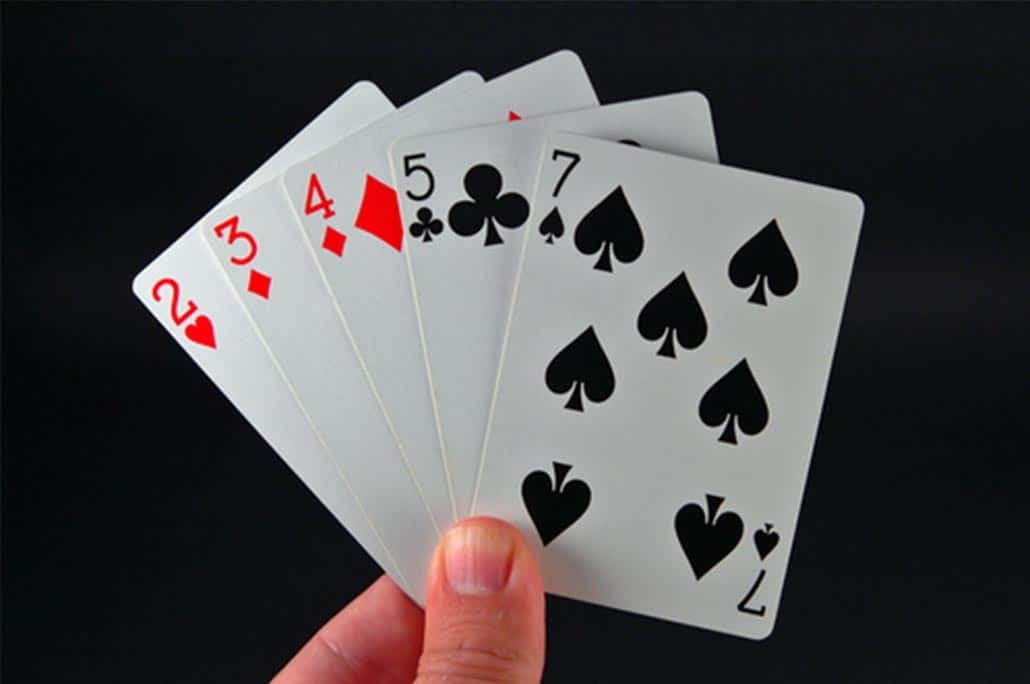
So, now you know how the game got its name. This is the lowest possible five-card combo that doesn’t contain a straight.
When comparing hands, this game uses the same rules as in Razz poker, for example, where the player holding the lowest card at the high end wins, i.e., 2, 3, 4, 5, 9, loses to 3, 4, 5, 6, 8.
Any five-card hand always beats any non-five card hand. For example, a hand as weak as 8,9, J, Q, A is still better than 2, 2, 4, 5, 6. Any four-card hand beats any three-card hand, etc.
2-7 Triple Draw Rules & Betting
Now that you know hand rankings of this game, you’re ready to learn how to play 2-7 Triple Draw.
It features interesting dynamics with three different draw rounds, so there is definitely a lot of thinking involved.
The game has the same setup as Hold’em and is played in a six-max format. Two players to the left of the dealer post the small and the big blind, respectively.
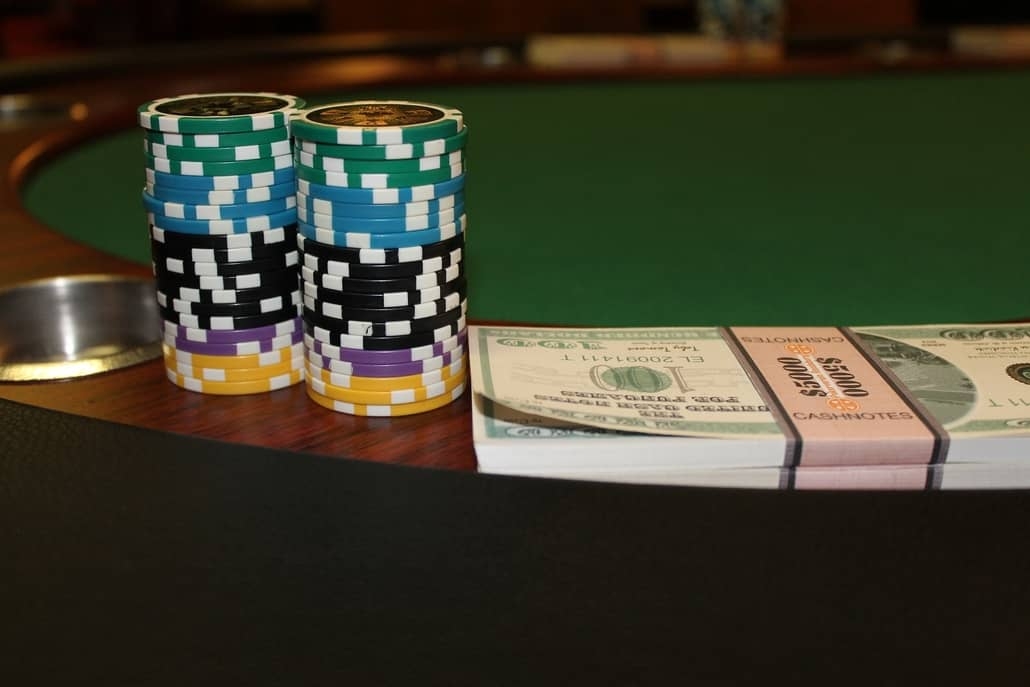
Usually, 2-7 Triple Draw is played using the fixed betting format.
A small bet is in play during the first two rounds, and the big bet comes into play for the final two rounds.
Once blinds are posted, the dealer will deal out five cards to each player (one at a time), starting with the player seated in the small blind.
Once all players have received their cards, the first betting round begins with the player to the left of the big blind (UTG).
Just like in Limit Hold’em, they can fold, call, or raise in fixed increments. The action then continues around the table until all bets have been settled.
The First Draw
When the first betting round of 2-7 Triple Draw is completed, the first draw ensues. All players still active in the pot will have a chance to discard as many cards as they’d like (1 to 5). They can also choose to stand pat, i.e., not exchange any cards, which is similar to the 5 Card Draw poker game.
Once all players have decided on the number of cards they want to discard, the dealer will begin with the first active player to the left of the button, taking their discarded cards into the muck and replacing them with new ones.
They’ll go around the table until all players have had a chance to get new cards.
This is followed by another round of betting that begins with the first still active player to the left of the button (just like in Hold’em). This holds true for the remaining betting rounds as well.
The Second Draw
When all of the betting is completed after the first drawing round, players will once again have a chance to discard as many cards as they like and get new ones.
The process is exactly the same as described above. Another betting round ensues, but the big bet is now in play for this and next round.
The Third & Final Draw
If there are still players remaining in the hand, they’ll have a chance to discard some cards for one final time.
Once again, there is no limit as to the number of cards a player wants to discard or if they want to stand pat.
After this draw, the final betting round ensues, followed by the showdown.
If it happens at any point during any draws that there aren’t enough cards in the deck for all players to get new ones, the dealer will take cards from the muck, reshuffle them, and use these discards to complete the drawing round.
The Showdown
Provided there are still two or more active players in the hand after the final betting round, they’ll proceed to the showdown.
The winner will be determined using 2-7 Triple Draw hand rankings described earlier, and players with exactly the same winning hand will split the pot equally.
Basic 2-7 Triple Draw Strategy
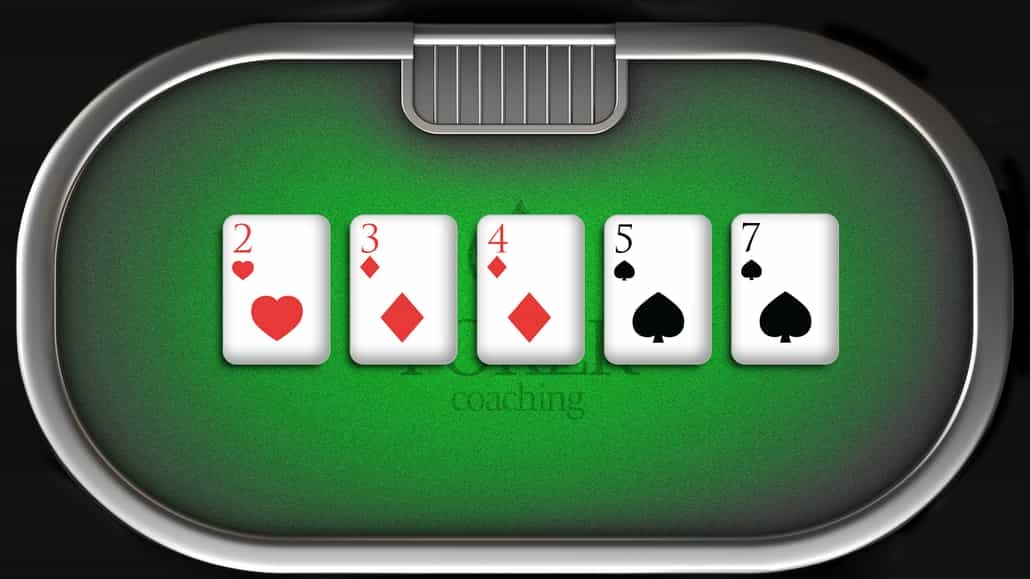
Because 2 7 Triple Draw is so different from most other poker variations, you’ll need to learn a solid strategy from this game almost from scratch.
Of course, many of the general principles and poker tips still apply in this game as well, so your previous knowledge will still come in quite handy.
Starting Hand Selection
The first thing you’ll need to figure out is what constitutes a good starting hand in 2-7 Triple Draw poker.
Like always, this is the starting point for any future strategic considerations, and if you don’t get this part right, you’ll likely struggle with the rest.
This game does feature three different draw rounds, so you will have a lot of chances to improve and catch up.
However, the first thing you should memorize is that you shouldn’t get involved with a hand that requires you to draw more than three cards in the first round.
Here are some takeaways for your hand selection:
- Hands you can play that require you to draw three cards are the ones containing a deuce and another low card with it (between 3 and 7). Although they’re not very strong, these hands have the nut potential, so they’re worth getting involved with.
- Hands worth getting involved that require two cards to improve are generally the ones containing a 2 and two more low cards (but not in sequence, i.e., not 2, 3, 4). Hands with 7-5 and 7-4 combos on top are better than 7-6, 6-5, and 6-4 combinations because the latter group can be tricky to play.
- Pretty much all 8-low and better are hands that you want to stick around with when you need to draw just one card
If you’re lucky enough to get dealt a 7 or 8-low on the first deal, you shouldn’t be drawing at all.
Keep your hand as is and try to get as much money into the pot as possible – you’re definitely a favorite to win.
With a hand like 9-7, you can consider both options, i.e., standing pat or discarding the 9 to try and make an unbeatable monster.
Understanding Relative & Absolute Hand Strength
In all forms of poker, there is a divide between the absolute and the relative hand strength. In Texas Hold’em, for example, the nut flush is a very strong hand in absolute terms, but you won’t be crazy about putting your entire stack on the line with it on a double-paired board.
When it comes to the 2-7 Triple Draw strategy, you’ll need to understand that the strength of your hand is dependent on the number of opponents involved in the pot.
For example, if you’re up against just one player, a hand like 9 or 8-high will often win. Against multiple opponents, though, your odds of holding the winner decrease significantly.
This part will take some practice and experience. Being new to 2-7 poker, you’ll pretty much have to make some mistakes along the way before you’re able to figure out what hands to take to the showdown in different scenarios.
Don’t sweat it, though, as it’s a part of the learning curve.
Position Is Super-important
You probably know about the importance of poker positions in Hold’em and Omaha, but in this game, the position is truly the king.
Being last to act and seeing how many cards your opponents are discarding will provide you with a tremendous amount of information.
You’ll be able to put a lot of pressure on players with weak hands, and there isn’t much they can do to hide the fact their hands are weak – they need to draw to improve.
You’ll also have a much better idea of how likely you are to win with your current holdings. For example, if you have a hand like 9-8 and both of your opponents took three cards, you’ll know that your best strategy is to stand pat and keep betting.
They’ll need to get quite lucky to improve to a better hand after taking three cards.
Pick Your Bluff Spots Carefully
Unlike the single draw variation that’s often played as no limit, the 2-7 Triple Draw Strategy doesn’t include many bluffs.
Since this is a fixed limit game, your opponents will often have great odds to continue in the hand due to the money in the middle.
This isn’t to say that bluffing is completely out of the question, though.
You’ll find some decent spots to bluff on rivers where both you and your opponents are drawing one card.
If you happen to brick your draw (by making a pair, for example), firing out a bet might be a good idea. The other player will often have to fold a stronger hand that just doesn’t seem good enough.
Plus, your bluffs don’t have to work all that often to be profitable on the river as the pot will usually grow quite big by that point.
Final 2-7 Triple Draw Tips
This basic outline for 2-7 Triple Draw rules and strategy isn’t all you need to become a crusher at high stakes, but it will help you cover some distance at the very start.
Keep in mind that this is a bit of an obscure variation, so it’s not uncommon to come across players, especially online, that are trying the game without even knowing the rules.
Here are a few more tips to get you started on your 2-7 Triple Draw adventure:
- Garner some experience playing micro-stakes cash games and small buy-in tournaments. You can find plenty of these in online poke rooms, and it will help you get a feel for the game and become comfortable with it.
- Remember the cards that you discard. If you’ve discarded a small card from a pair, that’s one small card fewer for your opponents to use to beat you.
- Stay aggressive in position. Even if you don’t have a made hand, if you exchange fewer cards than your opponent, keep betting.
- Stay patient. It will take some time to get your head around this game, so don’t get frustrated if you make some silly mistakes when you’re just starting. It happens to the best.
Conclusion: Enjoy Deuce To Seven Triple Draw
2-7 Triple Draw is a very fun and exciting game that you might fall in love with, just like I did.
It can be a nice addition to your poker repertoire or something to add to your home games to freshen things up a bit.
Either way, it’s definitely worth taking some time to learn how to play 2-7 Triple Draw poker, and while you already know the basics, you can dig even deeper in this Mixed Games Masterclass by Jake Abdalla.
It’s quite unlikely this game will ever reach the popularity of variations like Omaha and Hold’em, but it remains popular with a certain segment of the player base.
You probably won’t be able to find enough 2-7 tables going to make this your main game, but you can still make some solid profit from it even if you choose to play it just for fun and in-between your regular sessions.









